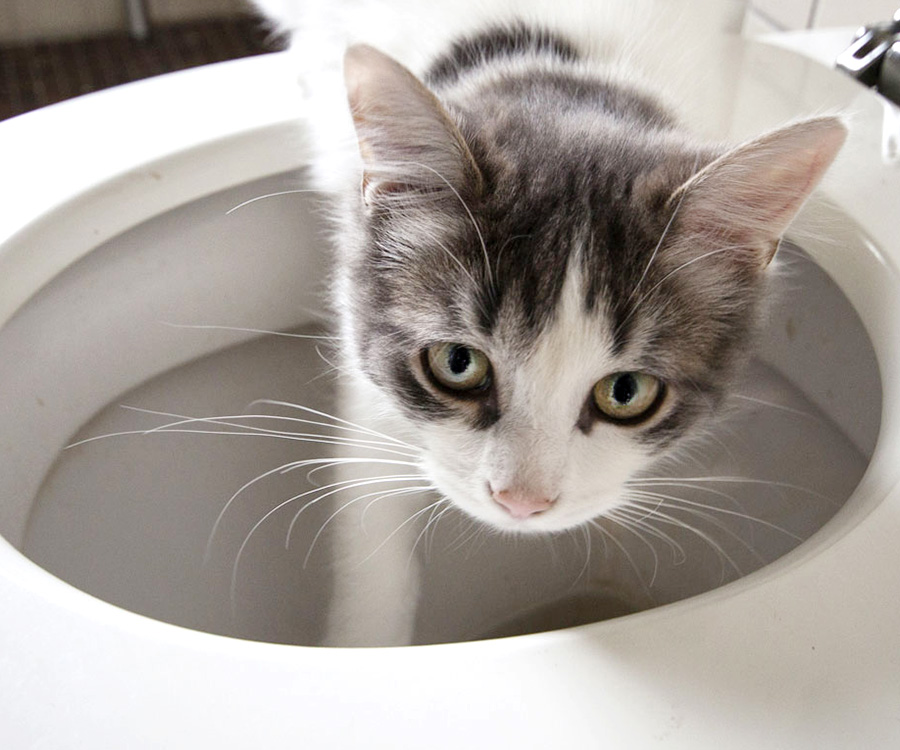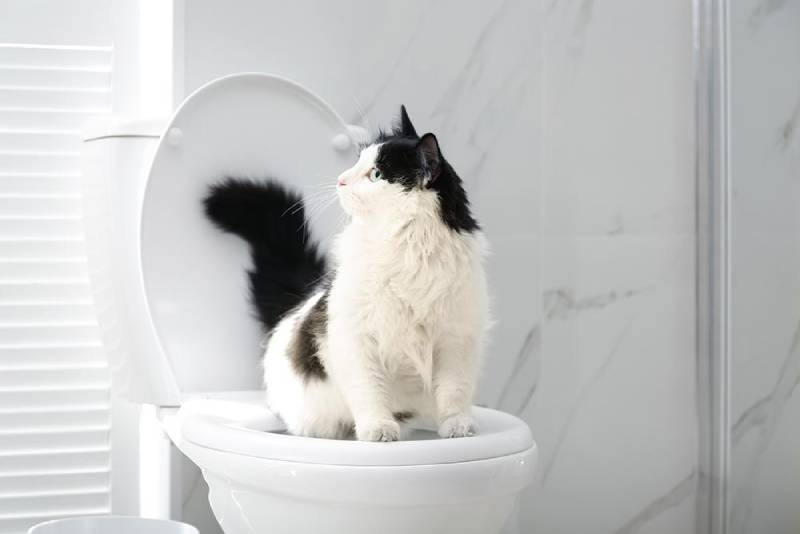Essential Considerations Regarding Flushing Animal Waste Down the Toilet
Essential Considerations Regarding Flushing Animal Waste Down the Toilet
Blog Article
Every person maintains their unique conception on the subject of Should you flush animal waste down the toilet.

When it concerns dealing with waste, especially animal waste, lots of people often turn to the hassle-free choice of flushing it down the commode. However, this relatively very easy remedy can have serious repercussions for the atmosphere and public health. In this write-up, we'll discover why flushing pet waste down the bathroom is a poor concept and supply alternate techniques for appropriate disposal.
Introduction
Appropriate waste disposal is important for maintaining environmental sustainability and public health. While it may seem safe to purge animal waste down the bathroom, it can result in various concerns, both for the setting and human wellness.
Risks of flushing pet waste
Ecological impact
Purging animal waste introduces unsafe germs and pathogens right into waterways, which can adversely affect aquatic ecological communities. These microorganisms can infect water sources and injury marine life, interrupting fragile communities.
Public health problems
Animal waste has hazardous microorganisms such as E. coli and Salmonella, which can pose major health and wellness threats to humans. Flushing animal waste down the bathroom can infect water supplies, resulting in the spread of illness and infections.
Alternatives to flushing
Rather than purging pet waste down the bathroom, there are a number of alternate disposal approaches that are more environmentally friendly and sanitary.
Composting
Composting animal waste is an eco-friendly means to take care of it. By composting, raw material is broken down into nutrient-rich soil, which can be used to fertilize yards and plants.
Garbage dump disposal
Taking care of pet waste in a garbage dump get more info is one more choice. While not as environmentally friendly as composting, it is a more secure option to flushing, as it prevents the contamination of water resources.
Pet garbage disposal systems
There are specialized pet dog waste disposal systems readily available that securely and hygienically deal with pet waste. These systems frequently make use of enzymes to break down waste and eliminate odors.
Steps to correct pet waste disposal
To make sure correct disposal of animal waste, comply with these actions:
Scooping and bagging waste
Frequently scoop and bag pet waste making use of eco-friendly bags. This prevents waste from contaminating the environment.
Using designated waste bins
Dispose of bagged animal waste in assigned waste containers, such as garden compost bins or landfill bins. Prevent flushing it down the bathroom in all costs.
Cleaning litter boxes and pet locations frequently
Consistently clean can and pet areas to prevent the build-up of waste and bacteria. Usage pet-safe cleaning items to preserve health.
Advantages of correct disposal methods
Adopting appropriate disposal approaches for animal waste uses a number of advantages:
Decreased environmental pollution
Correct disposal methods reduce the risk of environmental pollution, securing waterways and communities from contamination
Reduced threat of water contamination.
By preventing flushing pet waste down the bathroom, the threat of water contamination is substantially decreased, protecting public health.
Enhanced hygiene and hygiene
Appropriate disposal approaches promote far better cleanliness and health, producing a safer setting for both people and pets.
Conclusion
Finally, purging pet waste down the commode is unsafe to the atmosphere and public health. By embracing different disposal techniques and following appropriate waste management techniques, we can decrease the unfavorable effect of pet waste and add to a cleaner, much healthier planet.
Why You Should Never Flush Cat Poop Down the Toilet
A rose by any other name might smell as sweet, but not all poop is created equal. Toilets, and our sewage systems, are designed for human excrement, not animal waste. It might seem like it couldn’t hurt to toss cat feces into the loo, but it’s not a good idea to flush cat poop in the toilet.
First and foremost, assuming your cat uses a litter box, any waste is going to have litter on it. And even the smallest amount of litter can wreak havoc on plumbing.
Over time, small amounts build up, filling up your septic system. Most litter sold today is clumping; it is made from a type of clay that hardens when it gets wet. Ever tried to scrape old clumps from the bottom of a litter box? You know just how cement-hard it can get!
Now imagine just a small clump of that stuck in your pipes. A simple de-clogger like Drano isn’t going to cut it. And that means it’s going to cost you big time to fix it.
For an amusing, graphic tale of what happens when you flush too much litter down the toilet all at once, take a few minutes to read Gene Weingarten’s 2017 Washington Post column “So that’s what happens when you flush cat litter down the toilet.”
Parasitic Contamination
Believe it or not, your healthy kitty may be harboring a nasty parasite. Only cats excrete Toxoplasma in their feces. Yet it rarely causes serious health issues in the cats that are infected. Most people will be fine too if infected. Only pregnant women and people with compromised immune systems are at risk. (If you’ve ever heard how women who are expecting are excused from litter cleaning duty, Toxoplasma is why.)
But other animals may have a problem if infected with the parasite. And human water treatment systems aren’t designed to handle it. As a result, the systems don’t remove the parasite before discharging wastewater into local waterways. Fish, shellfish, and other marine life — otters in particular — are susceptible to toxoplasma. If exposed, most will end up with brain damage and many will die.
Depending on the species of fish, they may end up on someone’s fish hook and, ultimately on someone’s dinner plate. If that someone has a chronic illness, they’re at risk.
Skip the Toilet Training
We know there are folks out there who like to toilet train their cats. And we give them props, it takes a lot of work. But thanks to the toxoplasma, it’s not a good idea.
Leave the toilet to the humans, and accept your future litter cleaning duty.

Consistently clean can and pet areas to prevent the build-up of waste and bacteria. Usage pet-safe cleaning items to preserve health.
Advantages of correct disposal methods
Adopting appropriate disposal approaches for animal waste uses a number of advantages:
Decreased environmental pollution
Correct disposal methods reduce the risk of environmental pollution, securing waterways and communities from contamination
Reduced threat of water contamination.
By preventing flushing pet waste down the bathroom, the threat of water contamination is substantially decreased, protecting public health.
Enhanced hygiene and hygiene
Appropriate disposal approaches promote far better cleanliness and health, producing a safer setting for both people and pets.
Conclusion
Finally, purging pet waste down the commode is unsafe to the atmosphere and public health. By embracing different disposal techniques and following appropriate waste management techniques, we can decrease the unfavorable effect of pet waste and add to a cleaner, much healthier planet.
Why You Should Never Flush Cat Poop Down the Toilet
A rose by any other name might smell as sweet, but not all poop is created equal. Toilets, and our sewage systems, are designed for human excrement, not animal waste. It might seem like it couldn’t hurt to toss cat feces into the loo, but it’s not a good idea to flush cat poop in the toilet.
First and foremost, assuming your cat uses a litter box, any waste is going to have litter on it. And even the smallest amount of litter can wreak havoc on plumbing.
Over time, small amounts build up, filling up your septic system. Most litter sold today is clumping; it is made from a type of clay that hardens when it gets wet. Ever tried to scrape old clumps from the bottom of a litter box? You know just how cement-hard it can get!
Now imagine just a small clump of that stuck in your pipes. A simple de-clogger like Drano isn’t going to cut it. And that means it’s going to cost you big time to fix it.
For an amusing, graphic tale of what happens when you flush too much litter down the toilet all at once, take a few minutes to read Gene Weingarten’s 2017 Washington Post column “So that’s what happens when you flush cat litter down the toilet.”
Parasitic Contamination
Believe it or not, your healthy kitty may be harboring a nasty parasite. Only cats excrete Toxoplasma in their feces. Yet it rarely causes serious health issues in the cats that are infected. Most people will be fine too if infected. Only pregnant women and people with compromised immune systems are at risk. (If you’ve ever heard how women who are expecting are excused from litter cleaning duty, Toxoplasma is why.)
But other animals may have a problem if infected with the parasite. And human water treatment systems aren’t designed to handle it. As a result, the systems don’t remove the parasite before discharging wastewater into local waterways. Fish, shellfish, and other marine life — otters in particular — are susceptible to toxoplasma. If exposed, most will end up with brain damage and many will die.
Depending on the species of fish, they may end up on someone’s fish hook and, ultimately on someone’s dinner plate. If that someone has a chronic illness, they’re at risk.
Skip the Toilet Training
We know there are folks out there who like to toilet train their cats. And we give them props, it takes a lot of work. But thanks to the toxoplasma, it’s not a good idea.
Leave the toilet to the humans, and accept your future litter cleaning duty.

As a keen reader about , I think sharing that piece of content was a good thing. Loved our post? Please quickly share it. Let someone else locate it. Thanks so much for going through it.
Call Today Report this page